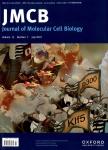A harlequin ichthyosis pig model with a novel ABCA12 mutation can be rescued by acitretin treatment
作者机构:State Key Laboratory of Stem Cell and Reproductive BiologyInstitute of ZoologyChinese Academy of SciencesBeijing 100101China University of Chinese Academy of SciencesBeijing 100049China State Key Laboratory of Animal NutritionInstitute of Animal ScienceChinese Academy of Agricultural SciencesBeijing 100081China State Key Laboratory of Molecular Developmental BiologyInstitute of Genetics and Developmental BiologyChinese Academy of SciencesBeijing 100101China College of Life ScienceNortheast Agricultural University of ChinaHarbin 150030China Department of Laboratory Animal ScienceCollege of Basic Medical SciencesThird Military Medical UniversityChongqing 400038China School of Life SciencesTsinghua UniversityBeijing 100084China Chinese Swine Mutagenesis ConsortiumBeijing 100101China
出 版 物:《Journal of Molecular Cell Biology》 (分子细胞生物学报(英文版))
年 卷 期:2019年第11卷第12期
页 面:1029-1041页
核心收录:
学科分类:1007[医学-药学(可授医学、理学学位)] 100705[医学-微生物与生化药学] 1001[医学-基础医学(可授医学、理学学位)] 100103[医学-病原生物学] 10[医学]
基 金:the Strategic Priority Research Programs of CAS(XDA16030300) the National Natural Science Foundation of China(81671274,31272440,and 31801031) the National Transgenic Project of China(2016ZX08009003-006-007) the Elite Youth Program of the Chinese Academy of Agricultural Sciences(ASTIP-IAS05)
主 题:harlequin ichthyosis ABCA12 pig model acitretin ENU mutagenesis deep intronic mutation
摘 要:Harlequin ichthyosis (HI) is a severe genetic skin disorder and caused by mutation in the ATP-binding cassette A12 (ABCA12) gene. The retinoid administration has dramatically improved long-term survival of HI, but improvements are still needed. However, the ABCA12 null mice failed to respond to retinoid treatment, which impedes the development of novel cure strategies for HI. Here we generated an ethylnitrosourea mutagenic HI pig model (named Z9), which carries a novel deep intronic mutation IVS49-727 AG in the ABCA12 gene, resulting in abnormal mRNA splicing and truncated protein production. Z9 pigs exhibit significant clinical symptom as human patients with HI. Most importantly, systemic retinoid treatment significantly prolonged the life span of the mutant pigs via improving epidermal maturation, decreasing epidermal apoptosis, and triggering the expression of ABCA6. Taken together, this pig model perfectly resembles the clinical symptom and molecular pathology of patients with HI and will be useful for understanding mechanistic insight and developing therapeutic strategies.



